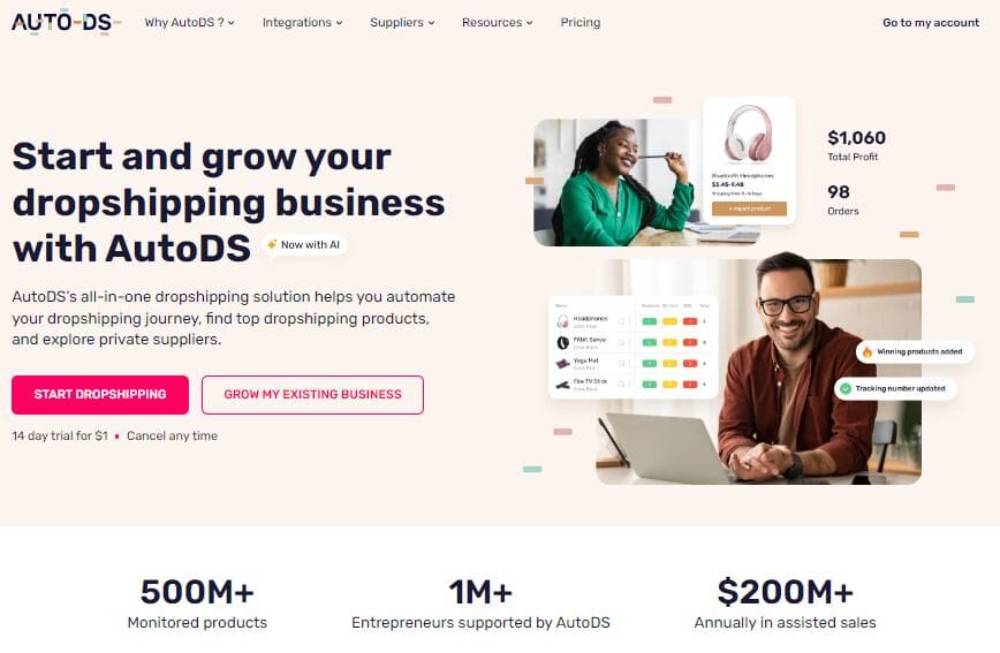
Dealing with Out-of-Stock Products in Real-Time
Few things frustrate ecommerce customers more than finding the perfect product—only to be met with an “out of stock” message at checkout. For online retailers, managing inventory issues isn’t just a backend concern; it directly impacts revenue, reputation, and customer retention.
In this guide, we’ll walk through the essential strategies and tools for real-time stock management, showing you how to respond to product unavailability swiftly, prevent lost sales, and improve your fulfilment process with timely ecommerce alerts and automation.
Why Real-Time Stock Management Matters
Out-of-stock errors are more than an operational glitch—they have business-wide implications:
- Lost Sales: Customers leave your site and buy from competitors
- Customer Frustration: Creates a negative experience, especially when payment is attempted
- Ad Spend Waste: Paid traffic lands on unavailable product pages
- SEO Penalties: Poor user experience and broken links reduce search visibility
Efficient stock management is not just a backend function—it’s a core pillar of customer satisfaction and profitability.
1. Set Up Real-Time Inventory Sync
Your first defence against stockouts is a live inventory feed. Whether you’re selling on one platform or across multiple channels, your stock levels must reflect in real time.
Best Practices:
- Use tools that sync your inventory every 5–15 minutes
- Integrate your ecommerce platform with your warehouse or supplier systems
- For dropshipping, ensure your automation app reflects your supplier’s stock in real time
Recommended Tools:

- AutoDS – Real-time syncing with AliExpress, CJ Dropshipping, etc.
- Sellbrite – Multichannel sync for Shopify, eBay, Walmart, and Amazon
- Inventory Source – Supplier directory and inventory automation
- Zoho Inventory – Great for managing in-house stock across channels
Tip: Sync inventory with SKU-level accuracy to prevent overselling variants like size or colour.
2. Use Ecommerce Alerts and Notifications
Manual checking isn’t scalable. Real-time ecommerce alerts help you identify inventory issues the moment they arise.
Alert Types:
- Low Stock Alerts: Triggered when an item hits your buffer threshold
- Stockout Alerts: Notify you (and optionally your customer) the moment stock hits zero
- Back-in-Stock Alerts: Notify you and subscribers when inventory is replenished
Automation Tools:
- Shopify Flow (with Plus plan): Automate alerts and stock status changes
- Back In Stock App (Shopify): Customer notification and email collection
- Zapier Integrations: Link your ecommerce store to Slack, email, or SMS alerts
- Skubana or Brightpearl: Enterprise-level stock monitoring and auto-replenishment
3. Add a “Back in Stock” Notification Feature
Instead of losing a sale, invite customers to express interest in the product—even while it’s unavailable.
Why It Works:
- Captures leads you’d otherwise lose
- Shows demand, helping you prioritise restocks
- Allows for automated follow-up marketing
Implementation:
- Use tools like Back in Stock, Notify Me, or Klaviyo Flows
- Position the opt-in box prominently near the product title or “Out of Stock” label
- Use urgency messaging like “Be the first to know when it’s back!”
Conversion Tip: Send back-in-stock emails within minutes of replenishment to beat the competition.
4. Automatically Hide or Update Listings
If an item is unavailable for more than a few hours, update the listing dynamically.
Options:
- Hide the product until restocked
- Replace with similar alternatives or “Customers Also Bought”
- Add messaging like “Expected restock on [date]” to manage expectations
Smart Tool Example: Shopify + Mechanic App – Automatically unpublishes out-of-stock items and republish them once inventory returns.
Multichannel Tip: Ensure updates propagate across all marketplaces to avoid penalties.
5. Set Buffer Stock Thresholds
Avoid running your stock down to zero by setting buffer thresholds—an internal safety net.
How It Works:
- When a product’s available stock drops to your buffer level (e.g., 5 units), it’s marked “Out of Stock” to the public
- Allows you time to reorder or pause marketing
Tool Tip: Use platforms like Linnworks, DEAR Systems, or Cin7 to automate buffer management for large catalogues.
6. Monitor High-Risk SKUs
Not all products require equal attention. Identify top-performers or seasonal products that demand closer stock monitoring.
Create a Priority List:
- Top 10% of SKUs by revenue
- Fastest-moving seasonal items
- Items with long supplier lead times
Data Tip: Set custom alerts for these items via your analytics or inventory management system.
7. Communicate Stock Issues Transparently
If an item goes out of stock unexpectedly, honesty builds customer trust.
Best Practices:
- Clearly mark stockout status on product pages
- Offer estimated restock dates or suggest alternatives
- Provide email/SMS updates if timelines change
Customer Experience Tip: Add a “Can’t find what you need?” section linking to other bestsellers or offering support.
8. Automate Supplier Reordering
Dropshippers working with repeat suppliers can automate stock replenishment to avoid manual ordering delays.
Setup:
- Use supplier APIs or apps like DSers, CJ Dropshipping, or AutoDS
- Set rules to reorder once stock hits a specific level
- Add real-time syncing with fulfilment partners to avoid double ordering
Advanced Strategy: If working with private or white-label suppliers, build agreements for reorder triggers and fast restock turnarounds.
9. Display Real-Time Stock Quantities (When Strategic)
For high-demand products, showing real-time availability can drive urgency and reduce overselling risk.
Example Messaging:
- “Only 3 left in stock – order soon!”
- “More arriving Friday – pre-order now”
When to Avoid: Don’t display stock counts for low-demand or slow-moving products—it can reduce perceived popularity.
10. Create Contingency Plans for Stockouts
Even with safeguards, stockouts happen. Have a game plan ready.
Contingency Options:
- Redirect traffic to alternative or bundled products
- Offer pre-orders or backorders with incentives (e.g., 10% off)
- Run a “Notify Me” campaign and collect emails for future promotions
- Temporarily pause ad campaigns linked to the out-of-stock item
Retention Tip: Turn disappointment into opportunity by offering discounts on similar in-stock items.
Bonus Tools for Managing Real-Time Inventory

| Tool | Function | Best For |
| AutoDS | Stock monitoring for dropshippers | AliExpress, CJ, Amazon sync |
| Sellbrite | Multichannel inventory sync | Amazon, Walmart, Shopify stores |
| Back in Stock | Customer alerts for unavailable items | Shopify and BigCommerce users |
| Skubana | Advanced inventory and fulfilment | Scaling brands |
| Zoho Inventory | Low-cost inventory tracking | Small to mid-size businesses |
Pro Tip: Link Inventory to Ads and Marketing
If you’re running ads or email flows, link stock levels to your marketing strategy.
- Email Flows: Automatically pause abandoned cart emails for out-of-stock SKUs
- Meta Ads: Disable product catalogue listings with zero stock
- Landing Pages: Dynamically remove unavailable items via page builders or scripts
Tool Integration: Use Shopify Flow, Zapier, or custom scripts to automate these linkages.
Key Takeaway
Out-of-stock products happen, but they don’t have to hurt your customer experience or revenue. Good stock management is key. It includes syncing inventory, hiding listings, automating restocks, and capturing lost leads. Smart planning really makes a difference.
Stay In Stock, Stay In Control
Managing inventory issues in real time isn’t just about data. It’s also about ensuring a smooth customer journey, even when surprises arise. Automation, transparency, and agility help you turn stockouts into chances for loyalty, urgency, and lasting growth.
So implement smart systems, communicate clearly, and stay one step ahead—because keeping your store in stock is how you stay in business.


